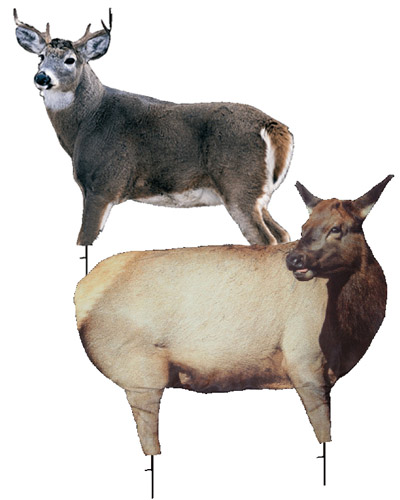 Several years ago Montana Decoy’s President, Jerry McPherson, was bowhunting with a buddy and having a fair amount of success. The pair had located some elk—but were having a hard time getting close. They had hiked in about five miles to their hunting area and started glassing and stalking from that point.
Several years ago Montana Decoy’s President, Jerry McPherson, was bowhunting with a buddy and having a fair amount of success. The pair had located some elk—but were having a hard time getting close. They had hiked in about five miles to their hunting area and started glassing and stalking from that point.
“The country was rather open, and we managed to call several bulls in to about 80 to 100 yards,” McPherson recalled. “At that point they would just hang up and search for the source of the call.”
During one of the long, fruitless hikes out of the hunting area, the pair decided they needed a decoy. Not just a decoy, but a decoy they could carry into the backcountry. Bulky 3-D decoys simply weren’t practical due to their size and weight. McPherson came up with the idea of putting an image on fabric and giving the elk something to look at, but other logistics still held him back. Then an idea struck him. He had worked at a butcher shop back in high school. At the end of each shift, they had to break down all of the equipment for cleaning. Jerry was always intrigued at how the band saw blade had to be twisted and coiled to fold it up, and voilà! He suddenly had the solution to his problem. To build his first prototype, McPherson went out and bought—what else?—a band saw blade. He ground the teeth off the blade, cut up some fabric and constructed the head from cardboard. “We spray-painted the fabric to look something like an elk, and the toughest part was convincing my buddy’s mom to sew the whole thing together for us,” McPherson chuckled.
Enthusiastically, the duo headed out to a local area for the maiden “field trial.” On that first hunt they had two spikes come in to the decoy. That was all McPherson needed, and when he returned, he started the patent process and got ready to bring an idea born from a meatless hunt to market.
Naturally, several improvements have been made to the product, including image transfer through a process of sublimation. Elk and whitetail models started off the line, and after a few years McPherson answered the call from consumers and started adding more animals such as antelope, turkeys, and a “moo cow.” A cow seems like a strange decoy choice until you stop and think about it. Its size, prevalence and nonthreatening nature make it an ideal hide. “Recently, we have been receiving success pictures where hunters are sneaking up on snow geese using our moo cow and jump-shooting them,” said McPherson.
“We are still considering new species and recently looked into creating a decoy of a roe deer for a customer in Germany. However, our primary focus for 2011 is on upgrading the pose and photography used in our decoys—to make them even more realistic,” McPherson explained.
Montana Decoy has also worked hard to partner with dealers and find better ways to create displays. “It’s amazing the difference when customers actually see the quality of the decoy,” McPherson said. “We’ve worked with a number of dealers providing displays or brackets to display the decoys—the results have been phenomenal.”
(406) 748-3092; www.montanadecoy.com






